The Mighty Peace is a treasure trove of history and culture, offering a wide range of museums that provide a glimpse into the past while also celebrating the present. From immersive exhibits that bring history to life to interactive displays that engage visitors of all ages, the museums across the region are a testament to the area’s rich and diverse heritage.
Whether you’re interested in exploring the art and culture of the area or delving into its natural history, the museums of the Mighty Peace offer distinct and enriching experiences for every visitor.
Indoor Experiences:
As soon as you step inside the Nampa and District Museum, you will be transported back to the fur trade and immersed in the area’s multicultural roots. With hundreds of artifacts and exhibits on two floors, this large museum provides insight into local industries, wildlife, farming, and traditional ways that were once utilized by local and surrounding communities.
During the summer months you will be able to explore their outdoor exhibits which include the original water tank built by the Central Canada Railway, the Rucka settlement house from 1937, and Reno’s Ukrainian Catholic Church from 1946. Guests of all ages will be captivated by this museum, with many easily losing track of time as they explore its fascinating displays.
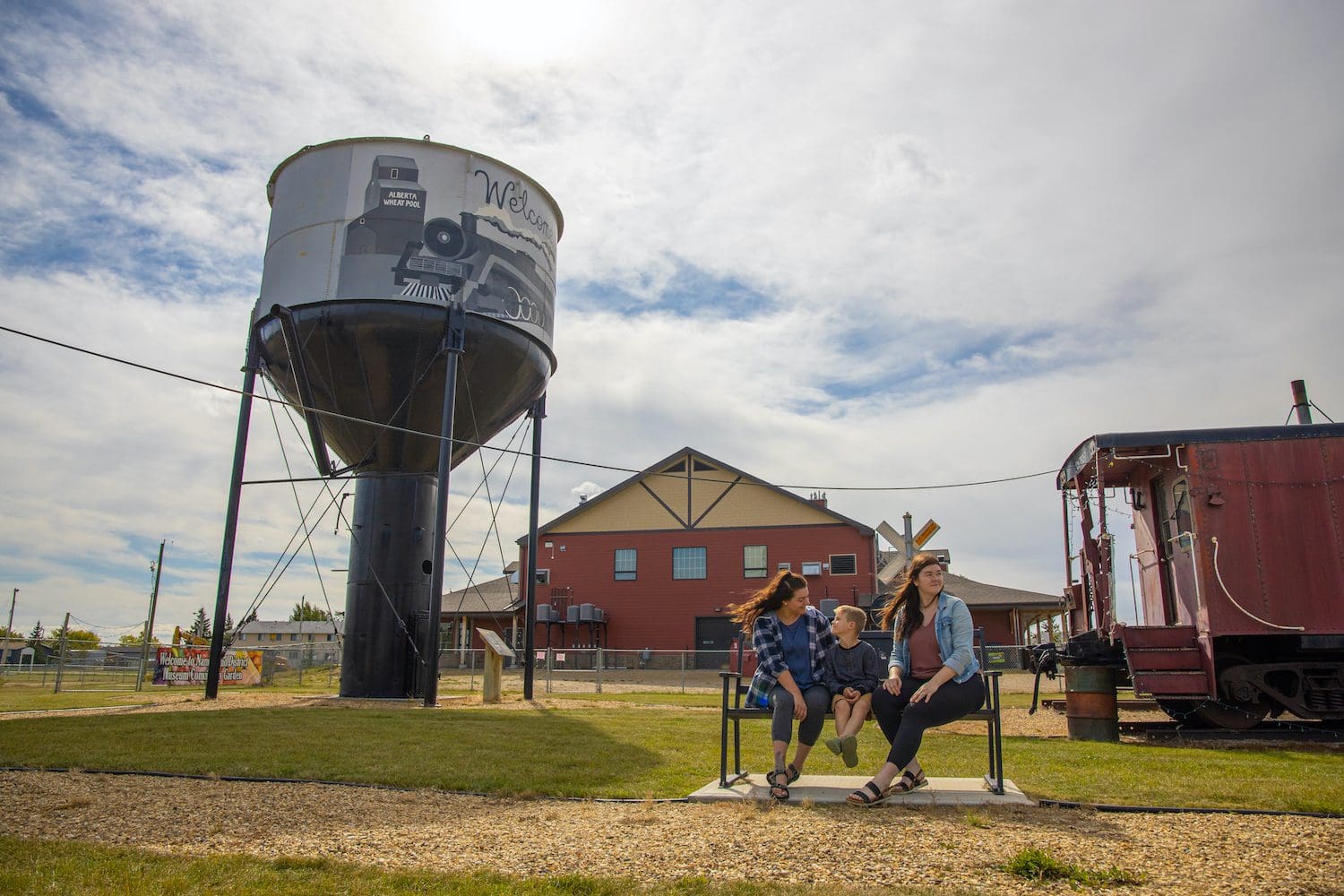
Smoky River Historical and Genealogical Society
With the slogan, “Our history is part of our future,” this quaint museum is a great place for those who want to dive into the past and complete their own hands-on research. This bilingual museum acts as a historical and genealogical research centre for Francophone and Indigenous people. Inside you will find a library that includes missionary letters from 1862 to 1920, ascendant charts, 17,000 photos of pioneers, Métis, and First Nations people, family and community history books, baptism, marriages, and burials for the dioceses of northern Alberta, Northwest Territories, Quebec, Ontario, Manitoba, and some American states, as well as French-language newspapers on microfilms, obituaries and 9500 memorial cards, a Drouin collection, and an expansive collection of Indigenous Peoples history and genealogy.
Open 10am to 4pm on Tuesdays and Wednesdays, or by appointment. Please call 780-925-3801 for more information.
Interested in learning about the pioneers and missionaries who settled in Girouxville? Then the Girouxville Museum is for you! With over 6,000 preserved and captivating artifacts, you will be able to learn more about the village’s natural history, transportation, fur trade, education, and hunting practices that were once commonly practiced.
When visiting, visitors will be able to get up close and personal with historical exhibits that showcase what life was like many years ago and which tell a tale of the past. Add this educational stop to your summer itinerary today and enjoy an immersive experience with the whole family.
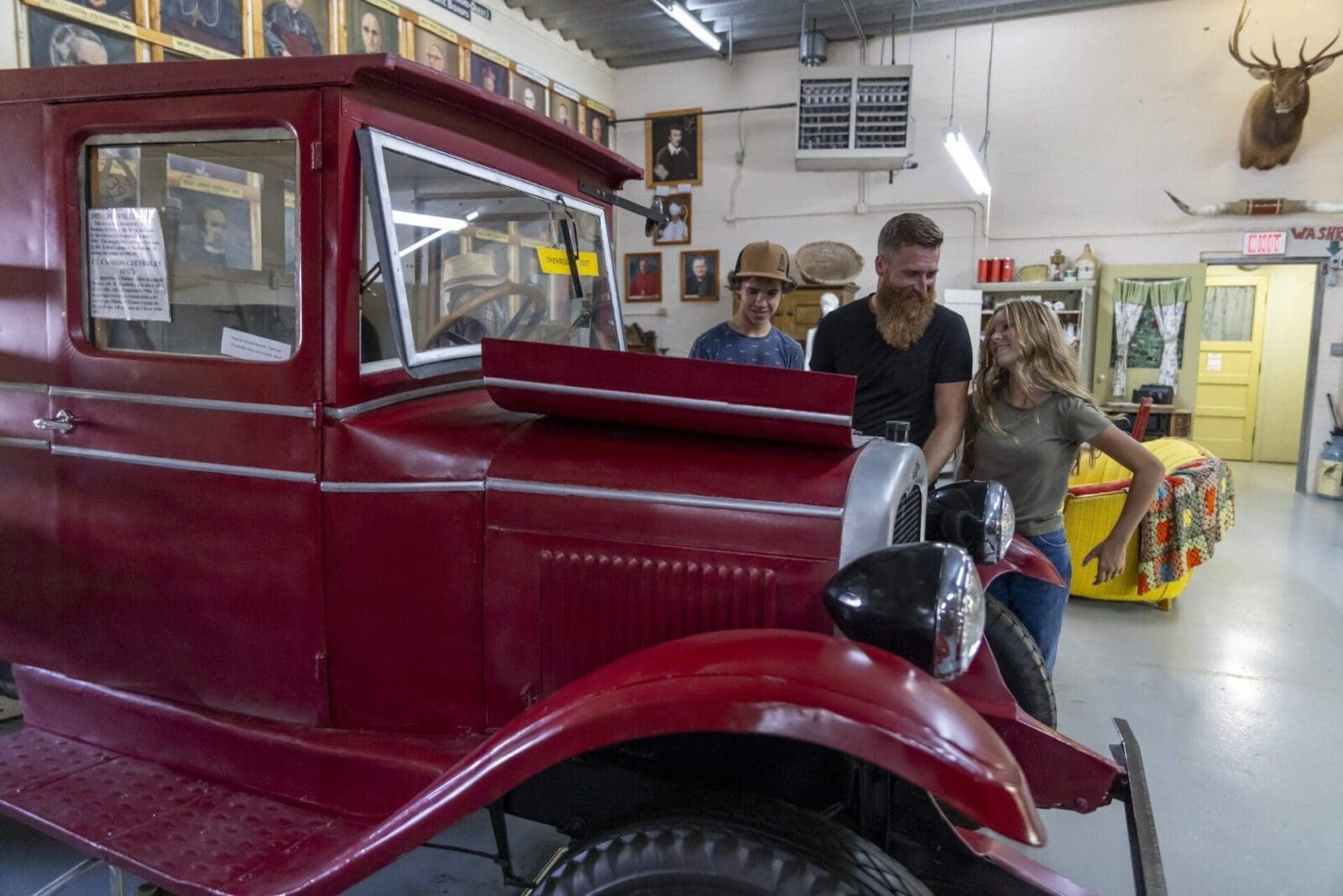
Peace River Museum, Archives & Mackenzie Centre
Filled with photographs, local artifacts, and archival records, the Peace River Museum, Archives & Mackenzie Centre allows visitors to celebrate and appreciate the town’s stories and rich history. This museum is a lively and engaging place where learning comes alive through its diverse collection of objects, often acting as a starting point for discussions and further exploration of the region.
You will be able to walk through the gallery of Sir Alexander Mackenzie, where there are archeological finds from Fort Fork, the 18th century compound that Mackenzie wintered in while on his way to the Pacific coast, as well as learn about prehistoric history and local Indigenous people in the Peace River Gallery, where you can examine the Town and the people, both past and present, who call it home.
For those interested in delving deeper into their own history linked to the area, the compiled archives here offer an extensive library for family and regional history research. This museum also hosts temporary exhibitions that provide a deeper exploration into some of the region’s most captivating stories, individuals, and artifacts. Guests will also be able to browse the museum’s gift shop for handcrafted treasures including 12 Foot Davis magnets, art cards, fiber arts, jewelry, history books by local authors, and more!
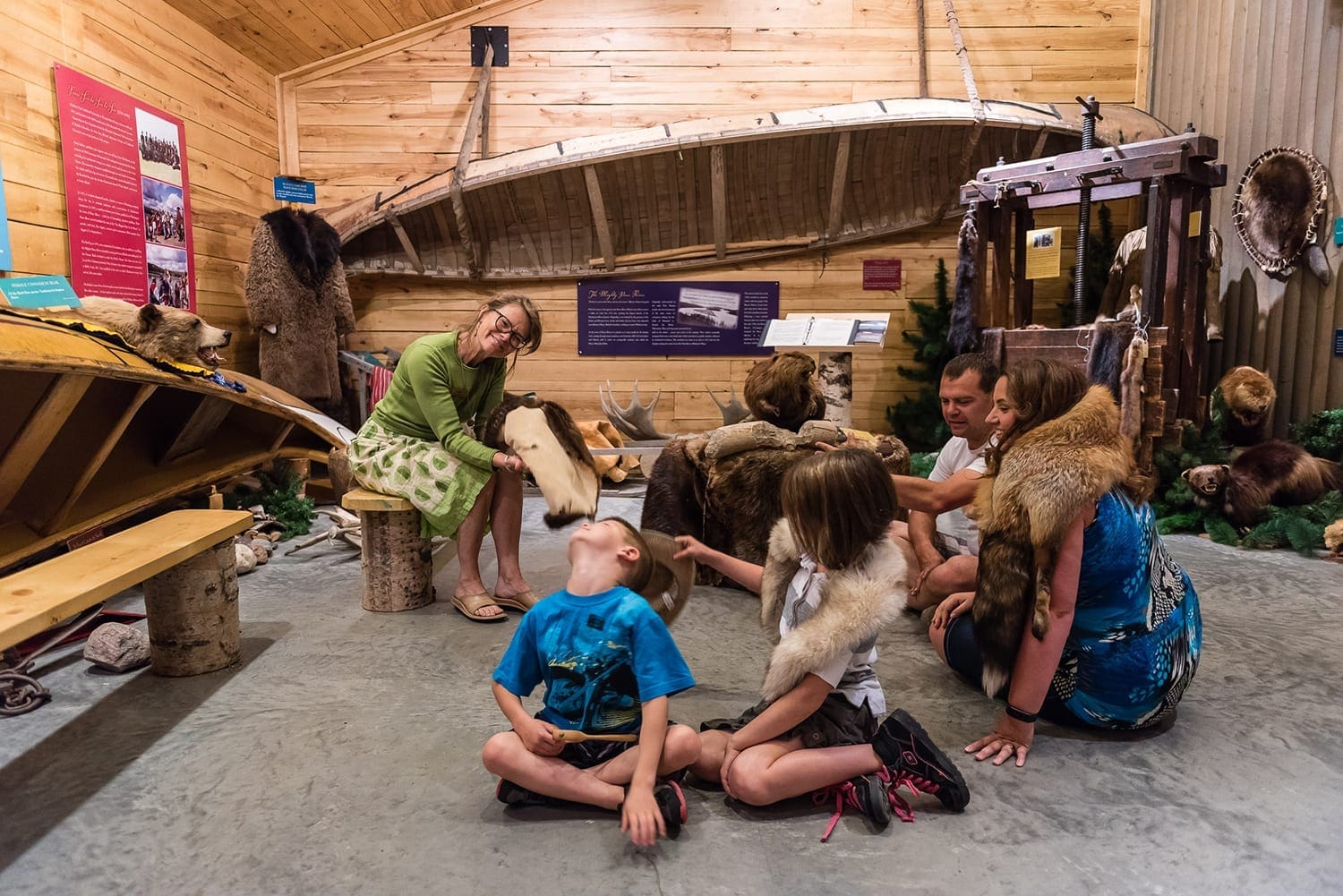
NAR Station Peace River Visitor Information Centre
Built in 1916, the NAR Station in Peace River stands as a remarkable piece of history, representing the last of its kind in Northern Alberta. Restored in 1988 and designated a Provincial Historic Resource Site, it now serves as Peace River’s Visitor Information Centre.
Step inside to find the ground floor furnished in 1920s-1930s style with various artifacts or make your way upstairs to see the showcases of local art. Throughout the summer and autumn, the station also hosts various events for guests to enjoy.
This location is your hub for all things Mighty Peace! Get free information on sightseeing, attractions, accommodations, museums, tours, and restaurants that are all up-to-date and comprehensive. The Visitor Information Centre is your go-to for planning a memorable adventure in the region. Their knowledgeable staff can help you make the most of your experience and plan your journey into the Mighty Peace and beyond.
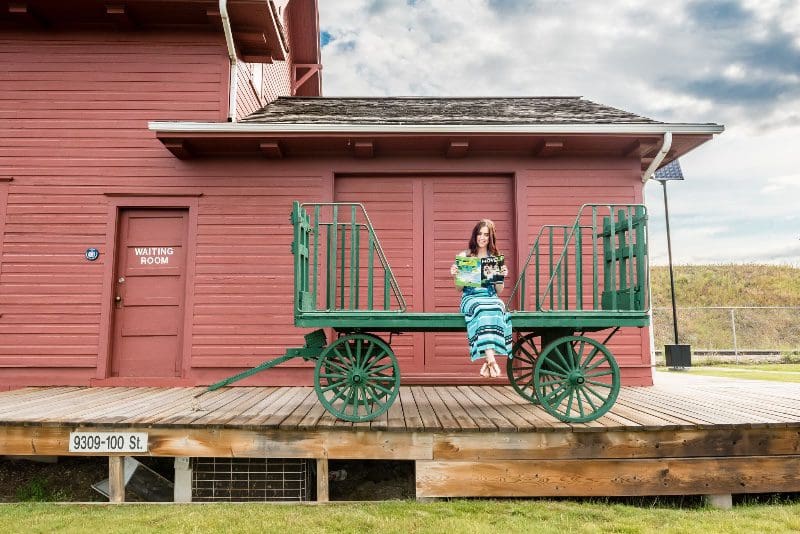
St. Isidore Museum and Cultural Centre
Nestled in the charming hamlet of St-Isidore lies a museum showcasing the rich heritage of the Francophone community that migrated from Quebec to settle in the Mighty Peace region. This family friendly museum features costumes, photographs, and artifacts that vividly narrate the stories of struggles and triumphs over the past.
Guests will also be able to find a replica train car inside the museum that provides a poignant visualization of the arduous journey these families undertook with their large families and livestock in tow. While visiting, you will also have the chance to admire the St. Isidore Weavers creations, which proudly showcase their talents and the preservation of traditional arts and crafts of their ancestors.
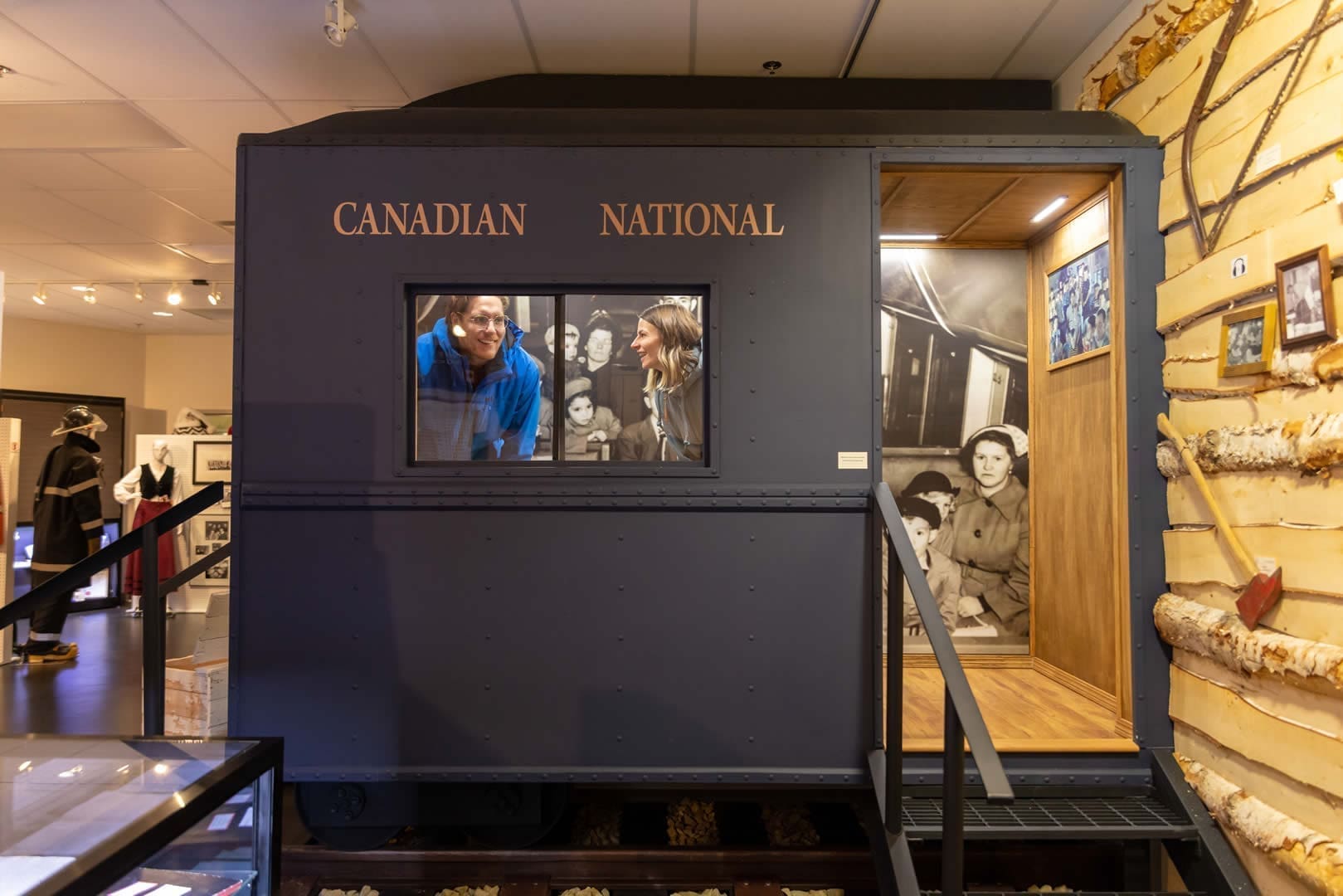
Northern Alberta Historical and Railway Museum
Found beside the picturesque Kimiwan Lake Bird Walk, this charming museum offers a rustic, yet informative experience. Constructed with 70-year-old rough-cut lumber from a local sawmill, the museum provides a glimpse into life from the early 1900s. Step inside, and you’ll feel like you’ve been transported back in time as you explore each room and take in the many historical artifacts on display.
Outside, guests can marvel at a caboose that was once part of the last passenger train on the rail line, which adds a touch of authenticity to the experience. Informative and entertaining, this museum is perfect for families and individuals looking to immerse themselves in the history of McLennan. After a day of exploration, stop by and enjoy some time spent learning and appreciating the rich history of the region!

In the tight-knit community of Dixonville, you will find a charming museum housed in what some locals humorously claim to be the world’s smallest. Despite its size, this museum stands as evidence to the immense sense of community that defines the local area.
This quaint museum is located within an authentic early 20th-century trading post cabin, which was one of the first log buildings in the area. Originally a one-room store owned and operated by various residents, the building fell into disrepair over the years until the community rallied together to restore it.
Thanks to the dedication of numerous volunteers, the cabin was transformed into the Dixonville Museum, and now showcases a collection of artifacts that tell the story of the community’s settlement. The museum’s humble origins and the restoration effort behind it are proof of the strength, determination, and cooperation of Dixonville’s pioneers, highlighting the community’s rich history and close-knit spirit.
The Grizzly Bear Prairie Museum
Located in the charming town of Wanham Alberta, offers a unique glimpse into the region’s rich history and heritage. Founded in 1979 by a dedicated group known as the Community of Cooperating Organization (COCO), the museum officially opened its doors to the public in 1981. Since then, it has been a beloved landmark, drawing visitors who are eager to explore its fascinating exhibits and historical structures.
One of the museum’s highlights is a meticulously preserved two-story log house, originally constructed in 1924/1925. This historic building is furnished with a diverse array of artifacts that transport visitors back in time, providing a tangible connection to the lives and experiences of early settlers in the area. The log house stands as a testament to the craftsmanship and enduring spirit of those who built and inhabited it nearly a century ago.
In addition to the log house, the Grizzly Bear Prairie Museum boasts an impressive collection of other buildings that further enrich the visitor experience. Among these is the restored First Presbyterian Church, which first opened its doors in 1934. This beautifully preserved church offers insight into the spiritual and community life of the town’s early residents, adding a deeply personal dimension to the museum’s narrative.
The museum is particularly lively during the summer months, when it opens its doors extensively to welcome tourists and history enthusiasts. However, to ensure the best experience and confirm tour availability, it is highly recommended to contact Wayne at 780-694-3947. Wayne can provide detailed information about the museum’s hours, special events, and guided tour options, helping to plan a visit that is both enjoyable and informative.
Whether you’re a history buff, a local resident, or a curious traveler, the Grizzly Bear Prairie Museum offers an engaging and educational journey into the past. Its well-preserved buildings, extensive artifact collections, and the stories they tell make it a must-visit destination in Wanham.
Outdoor Experiences:
Lac Cardinal Pioneer Village Museum
Now is your chance to immerse yourself in the day-to-day life of a Peace Country pioneer at the expansive and interactive Lac Cardinal Pioneer Village Museum. Wander through this meticulously recreated pioneer village, which captures the essence of rural life from the 1920s to 1940s. You’ll be able to explore four fully furnished houses, a school, a blacksmith shop, and a general store, which all provide a glimpse into the lives of early pioneers who came to the region and called it home. The village doesn’t stop there though! It also features a fire hall, municipal office, a carpenter shop, church, barn, and library. Each building tells its own story of pioneer life and allows visitors to see firsthand what went into living a decade ago.
For an even more authentic experience, it is recommended to visit during the annual Pioneer Day celebrations held every second Saturday of August. You will be able to start your day with a hearty pancake breakfast before witnessing the sawmill, threshing machine, and blacksmith in action, and personally take part in demonstrations.
Guests of all ages will love to watch as butter is churned the old-fashioned way and will enjoy a leisurely horse and wagon ride through the village. Pioneer Day celebrations offer a perfect opportunity to experience the museum in full swing, bringing history to life in a truly unforgettable way.

Brownvale North Peace Agricultural Museum
If you have ever wanted to see a 15-foot fiberglass depiction of Brian Mulroney on a mechanical bull, then you must visit the Brownvale North Peace Agricultural Museum! This rural museum has historical buildings on display for you to explore, including the Grey Eagle school and the Brownvale Post Office, which are both filled with artifacts from bygone eras. The museum also showcases a range of agricultural and road-building equipment dating back to the days of horsepower. On top of that, you will also be able to see a fully restored 1929 Chevrolet Landau Convertible—one of only 16 left in existence, up close and personal.
The museum is located on the coroner of Highway 2 and Highway 737. Free parking is available at this wheelchair accessible facility. The museum hours are 11am – 3pm every Sunday from the May long weekend through to the September long weekend. Donations are gratefully accepted. For more information call – 780-740-5048.
The End of Steel Museum, opened in 1985, celebrates the unique history of the Hines Creek area, which marked the end of a railway line. This museum features three historic houses furnished with artifacts from the past, offering visitors a glimpse into the lives of early settlers.
The museum also includes a one-room schoolhouse, two historic churches, a trapper’s log cabin, and a caboose that served as a home for railmen. Additionally, there are exhibits on wildlife, forestry, and agricultural equipment, showcasing the tools and machinery used by early settlers, such as early tractors and vehicles, including a Bombardier “Nodwell” the track vehicle that kept the Canadian north connected. Currently, the museum is working on projects including a Ukrainian Heritage building and a working blacksmith’s shop.
Lubeck Hall, once a community gathering place, now hosts the Saturday Farmers’ Market there, where visitors can enjoy fresh cinnamon buns and coffee while chatting with locals. This is a must stop during summer road trips that the entire family can enjoy!
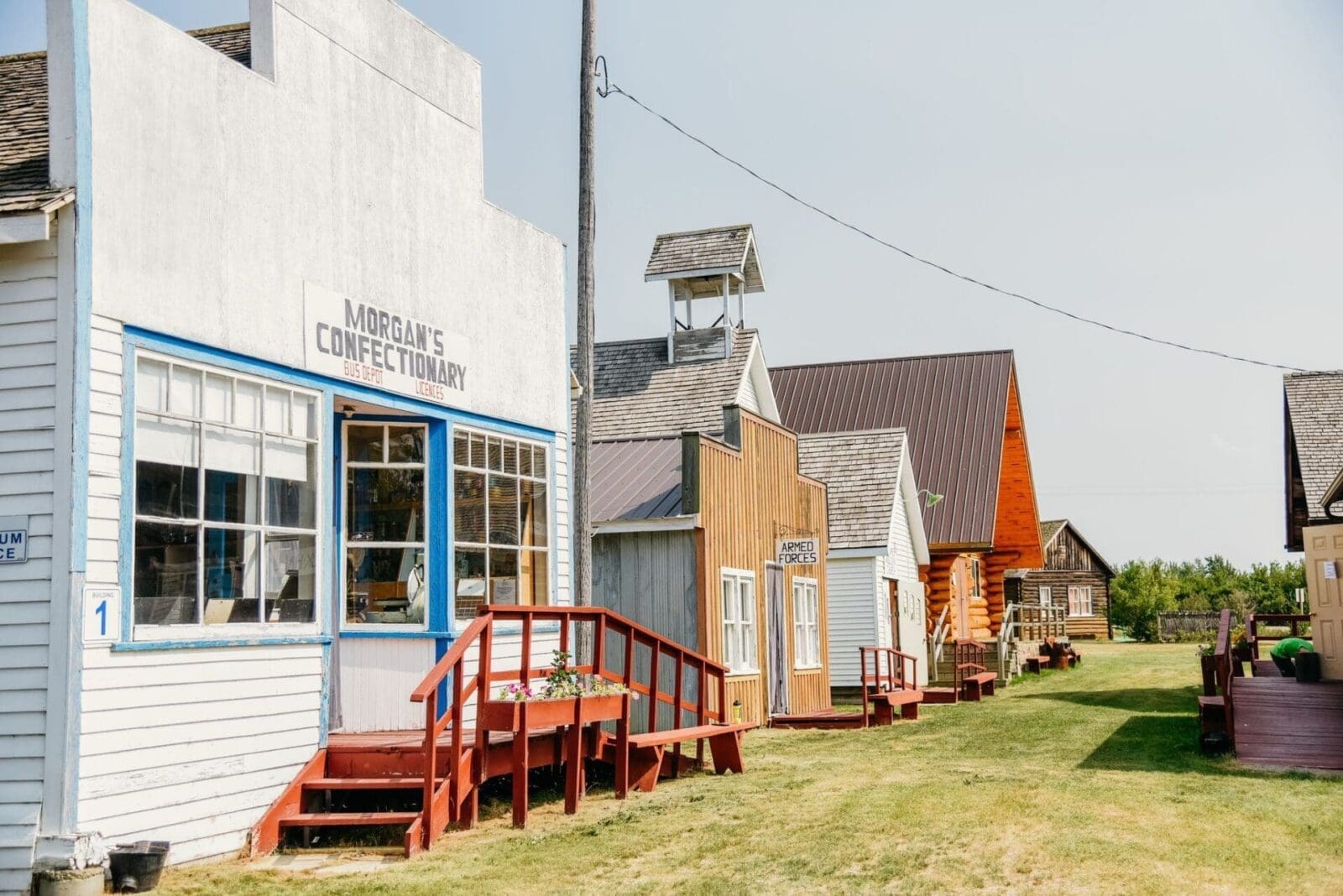
Worsley Homestead Heritage Museum
The Worsley Homestead Heritage Museum offers the perfect opportunity to step back in time and immerse yourself in history. Featuring antique farm equipment and a large barn to appreciate, this museum is a treasure trove for anyone interested in the area’s rich agricultural heritage. It’s an ideal destination for a day trip, providing a chance to learn about the hard work that characterized life many years ago.
Bring your family and use this visit as an educational experience for younger generations, showing them firsthand the tools and techniques that were essential to early farming life. This museum brings history to life, making it a memorable and enriching outing for visitors of all ages.
Experience the awe-inspiring sights at the Battle River Pioneer Museum, including a mounted albino moose and a 1500-year-old arrowhead. Step back in time and immerse yourself in the history of Manning as you explore the large main building, a cabin, post office, blacksmith shop, and machine shed.
Don’t miss the annual Heritage Day weekend antique tractor parade, showcasing the farm machinery of yesteryear. You’ll be able to witness demonstrations of traditional skills like woodworking, rope making, and flour milling, and envision the early pioneers hard at work.
This museum’s collection also features a mounted moose, timber wolf, cougar, grizzly bear, albino porcupine, and many other fascinating items that are sure to excite guests of all ages!
Historic Dunvegan Provincial Park
Step into the past at Historic Dunvegan, a site of both provincial and national historic significance. Here you will be able to surround yourself in history as you explore four original, authentically restored, and furnished buildings. With knowledgeable historic interpreters who are eager to share the stories of Indigenous people, tales from the fur trade, and what mission life was like with you, they will provide a truly unique and educational experience for visitors of all ages.
Located alongside the picturesque Peace River, Historic Dunvegan offers a breathtaking view of Alberta’s longest vehicle suspension bridge, adding to the charm of your visit. Whether you’re interested in history or simply looking for a fun day out with the family, there are activities to suit everyone here.
Before you begin your exploration, stop by the visitors’ centre near the entrance. Here, you can gather information and join guided tours of the historic buildings, ensuring you make the most of your visit to this remarkable site!

The Fairview Pioneer Museum, located just 1 km north of Fairview, offers a captivating glimpse into rural Canadian life of the early 20th century. This hidden gem features an array of attractions, including antique farm equipment, vintage vehicles like a fire truck and tow truck, and a collection of pioneer homes such as the Morrison, Hull, and Fitzpatrick houses.
You will be transported to a bygone era upon arrival, stepping into a charming village frozen in time. This museum also boasts farm, oilfield, sawmill, and blacksmith shop exhibits, showcasing the economic activities of the time. Education is highlighted with displays of one-room schools like the Woodlawn School and Scotswood School.
Managed by the Fairview Pioneer Museum Committee, the museum is open from May to August, Tuesday to Saturday, from 9 am to 5 pm. This living museum offers an immersive experience, appealing to both history enthusiasts and casual visitors. Don’t miss this remarkable destination that honors Alberta’s pioneering heritage!

Blueberry Mountain Military and Regional Historical Space
With a unique connection to Northwest Alberta’s military history, Blueberry Mountain was home to soldiers who served in every branch of the Canadian Military, which later contributed to the end of the Second World War. This historical space now aims to tell as many of these stories as possible to ensure that these people, their names, and their service are never forgotten.
Providing a factual record of the past, you will be able to walk through a display that tells the stories of many soldiers and veterans that resided in the Blueberry Mountain area. Photos, stories, and articles can be enjoyed throughout, such as the accomplishments of LtCol James Riley Stone, who started in Blueberry Mountain and ended up being the Provost Marshall of Canada, the Head of the Military Police.



